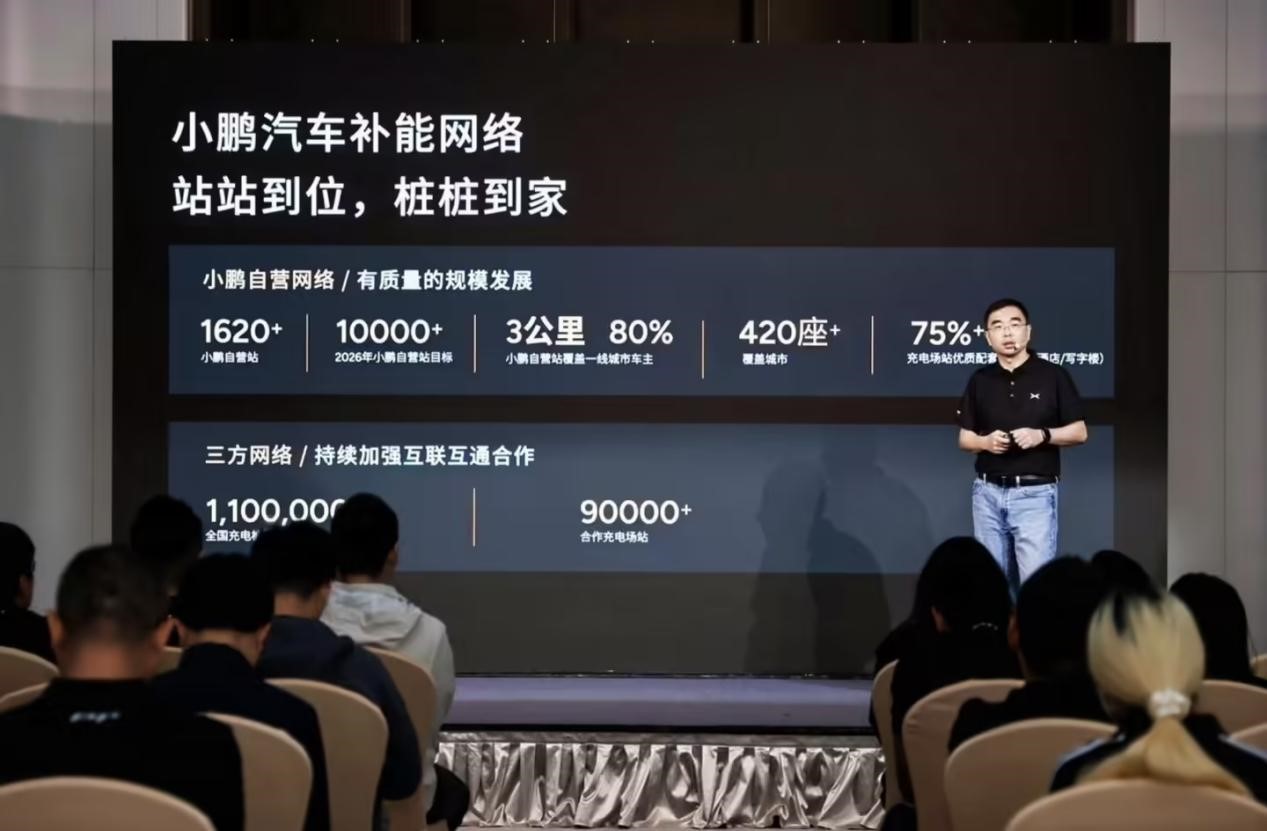In today's increasingly fierce competition in the new energy vehicle industry, Xpeng Motors is gradually building a powerful charging network with its forward-looking strategic layout and technological innovation. In this article, we will take an in-depth look at Xpeng's plans to expand its charging network, its impact on the industry, and its future prospects.
Current layout: more than 1,620 self-operated charging stations
Up to now, Xpeng Motors has established more than 1,620 self-operated charging stations across the country, 80% of which are located in first-tier cities, ensuring that car owners can find charging facilities within a 3-kilometer living circle. This layout not only reflects Xpeng's rapid response to the market demand in first-tier cities, but also demonstrates its deep cultivation in core markets.

Figure: Xpeng Motors' energy replenishment network station is in place, and the piles are at home
2026 target: more than 10,000 self-operated charging stations
Xpeng has set ambitious goals to increase the number of self-operated charging stations to more than 10,000 in more than 420 cities by 2026, and to equip 75% of charging stations with high-quality amenities, such as shopping malls, hotels and office buildings. The setting of this goal is not only the expansion of the existing charging network, but also the prediction and layout of future market demand.
Technological progress: 10 kilometers per kilowatt-hour of electricity
Xpeng Motors has reached a new height in energy consumption management, taking Xpeng P7+ as an example, it has achieved an industry-leading level of 10 kilometers per kilowatt-hour of electric energy and only 4 cents per kilometer. This achievement is due to Xpeng's four major energy consumption management principles: leading body design and manufacturing technology, efficient three-electric management strategy, self-developed X-HP 3.0 intelligent thermal management system, and precise driving control.
Third-party cooperation: nearly 90,000 cooperative stations
In addition to the construction of self-operated charging stations, Xpeng Motors also emphasized the importance of cooperation with third-party charging networks, saying that it will continue to strengthen interconnection cooperation, and there are currently nearly 90,000 cooperative stations to meet the diverse charging needs of users. The total number of charging piles nationwide has exceeded 1.1 million.
Market competitiveness analysis
The expansion of Xpeng's charging network will undoubtedly enhance its competitiveness in the new energy vehicle market. With the continuous improvement of charging infrastructure, consumer acceptance of electric vehicles will further increase, thereby driving the growth of Xpeng's sales. In addition, Xpeng's innovations in charging technology, such as the X-HP 3.0 intelligent thermal management system, will also become its differentiated competitive advantage in the market.
Future outlook
With the continuous expansion of the new energy vehicle market, charging infrastructure will become an important indicator to measure the strength of a brand. Through the expansion of its own charging stations, Xpeng Motors is not only committed to improving its competitiveness, but also contributing to the growth of the electric vehicle industry and promoting the popularization of sustainable mobility modes. How to translate this construction path into actual market impact in the future will be the key to Xpeng's success.
Conclusion
Xpeng's charging network expansion strategy is not only a positive response to the existing market, but also a forward-looking layout for future trends. Through the construction of self-operated charging stations, technological progress, third-party cooperation and the improvement of market competitiveness, Xpeng Motors is creating a more convenient and efficient charging ecosystem for users. We hope that this strategy will bring imaginary market returns to Xpeng Motors, and we hope that it can open a new era of more convenient and green travel for more electric vehicle users."






